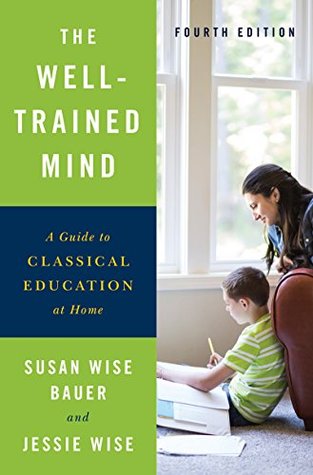More on this book
Community
Kindle Notes & Highlights
Grades K–3 Book Two: Stories of Artists and T...
This highlight has been truncated due to consecutive passage length restrictions.
Third Grade
Fourth Grade
critical thinking means that the student stops absorbing facts uncritically and starts to ask “Why?”: “Why did the U.S. wait so long to enter World War I?”
as we cover each of the subjects—math, language, science, history, art, music—we’ll offer specific instructions on how to teach your middle schooler to evaluate, to trace connections, to fit facts into a logical framework, and to analyze the arguments
The middle-grade student still absorbs information. But instead of passively accepting this information, she’ll be interacting with it—deciding on its value, its purpose, and its place in the scheme of knowledge.
A child must read fluently and well before entering the logic stage;
the basic mechanics of spelling, comma placement, capitalization, and sentence construction should no longer act as barriers to expression.
Second, the student has already been exposed to the basics of history, science, art, music, and other subjects. Now he has a framework of knowledge that will allow him to think critically.
A classical education isn’t a matter of tacking logic and Latin onto a standard fifth-grade curriculum.
In first through fourth grades, your focus was on memorization—on the learning of rules, dates, stories, and scientific facts.
As the logic stage progresses, you’ll be using more and more original sources, steering away from “textbooks” in the content areas.
Home-educated students typically spend an hour in self-directed work for every ten minutes of parental tutoring.
Check assignments on a weekly basis.
insist that your young students keep up in each core subject area, while you allow them to follow their interests in the less essential fields of study.
Logic is simply the study of rules of reasoning.
Logic trains the mind to follow certain patterns and gives students a new way to think about the categories true and false.
Logic to the Rescue: Adventures in Reason. 2008.
SUBJECT: Mathematics and algebra, grades 5–8 TIME REQUIRED: 45 to 60 minutes per day
Algebra, trigonometry, and calculus are all branches of mathematics; they depend, and build, on a strong understanding of arithmetic.
Everything we said about math approaches in Chapter 6 also applies to logic-stage curricula, so we won’t repeat it all here.
At the beginning of the logic stage, you should concentrate on solidifying the student’s understanding of, and skill in, arithmetical operations.
Your curriculum should involve plenty of practice—and no use of calculators.
Most math curricula can be finished in a year if you do four lessons per week and set aside one extra day to do testing, consumer math, a real-life math problem, or math games.
Try to stay alert for those times you use numbers, measurements, or calculations, and then ask yourself whether this problem is within the reach of your young math student.
students need three years of high-school math—algebra I, algebra II, and geometry—in order to graduate from high school, so ninth grade is the absolute latest that any student should take pre-algebra.
STEM-oriented students (those focusing in on science, technology, engineering, and mathematics) should take pre-algebra no later than seventh grade so that the twelfth-grade year is open for an advanced math elective.
Algebra, like logic, teaches the mind to think straight.
Use the “Before Algebra” resources until your student is confident and working problems with ease; then, introduce pre-algebra.
The program is very strong on concepts, mental math, and problem solving.
Students who have been using Math Mammoth with success can simply continue at their own pace until the Grade 7 book is complete.
Math Mammoth Light Blue Series
Grade 5 full set.
Grade 6 full set.
Math-U-See
Math-U-See is a conceptual program, mastery in approach, based on a series of teaching videos in which concepts are demonstrated using manipulatives.
Gamma (multiplication).
Saxon Math
Saxon Math is a procedural and heavily spiral program.


